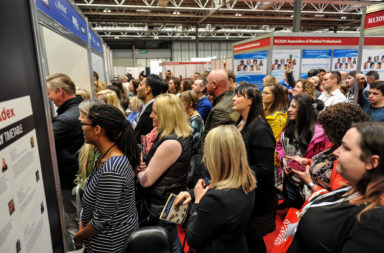Presenting facts and information from a positive framework is surely one of the reasons why Able Magazine succeeds as a favourite publication for disabled people. ‘A Journey Less Equal’ aren’t our words, but the subtitle of a report by the Equality and Human Rights Commission (EHRC) on the general subject of what it’s like to be disabled today in the UK. The employment chapter raises some interesting questions about policy and whether or not we’re still missing opportunities to help disabled people to succeed in employment – and by extension missing out on the benefits of an underused talentpool.
There are plenty of places where the story might start but perhaps a good place, is on a positive. The report reminds us that: “In its 2015 manifesto, the UK Government set out its aim, as part of its objective to achieve full employment, to halve the disability employment gap and transform policy, practice and public attitudes. The UK Government has a commitment to bring approximately 1.2 million disabled people into work by 2020.” The policy was clearly a pitch to voters looking to bring down benefits expenditure and in so doing, also feel that they were backing the party doing most to help disabled people towards the independence and security of employment – everyone wins.
The notion was sound and encouraging but perhaps the underlying structure was fl awed since despite research showing that the employment gap was narrowing between disabled and able-bodied people, disability charity Scope and the trades union, TUC both suggest that the Government are way off the pace and that the target wouldn’t be reached until 2030. Furthermore, a report by research organisation, the Resolution Foundation ventured that 1.5 million disabled people (aged 1664) would need to find employment to meet the target by the original 2020 deadline.
Strategy
For the moment then, the strategies put in place by Government seem to be less effective than required. Whilst disability specific schemes are admirable, mainstream ideas clearly need to be adjusted to make a wider impact. The report shows that between June 2011 and March 2016, around 37,000 Employment and Support Allowance claimants were referred to the UK Government’s main welfare to work scheme, the Work Programme. The report states that 35% of able-bodied people on the scheme achieved employment next to just 18% of disabled people.
The good news is that there are solutions that appear to be within reach. As far back as 2012, another EHRC report showed that employers were making false assumptions regarding the capabilities and overall contribution of disabled people, whilst at the same time were reluctant to offer solutions through flexibility on working hours and leave etc – all of which simply looks like a shortfall in general disability awareness – contributing to an inability to help disabled people already in work, to stay in work; thus exacerbating the issue.
These issues did lead to a slightly new approach by the UK Government and indeed it has become an area of strength for many leading companies, who recognise the value of staff retention (on the bottom line).
Stark
If there’s one stat that really matters, it’s the one that shows the stark split in employment opportunities in the UK. According to the report: “Between 2010/11 and 2015/16, there was an increase in the proportion of both disabled and non-disabled adults in employment. Despite this, the proportion of disabled adults in employment remained lower (47.6%) compared with that of non-disabled people (79.2%) in 2015/16, and the gap between these groups had widened since 2010/11.”
Momentum is perhaps the most important factor in what happens next. Industry as a whole has already sniffed an opportunity. For its part the Government have introduced policies but has been shown to lack the skill in application to help them succeed.



